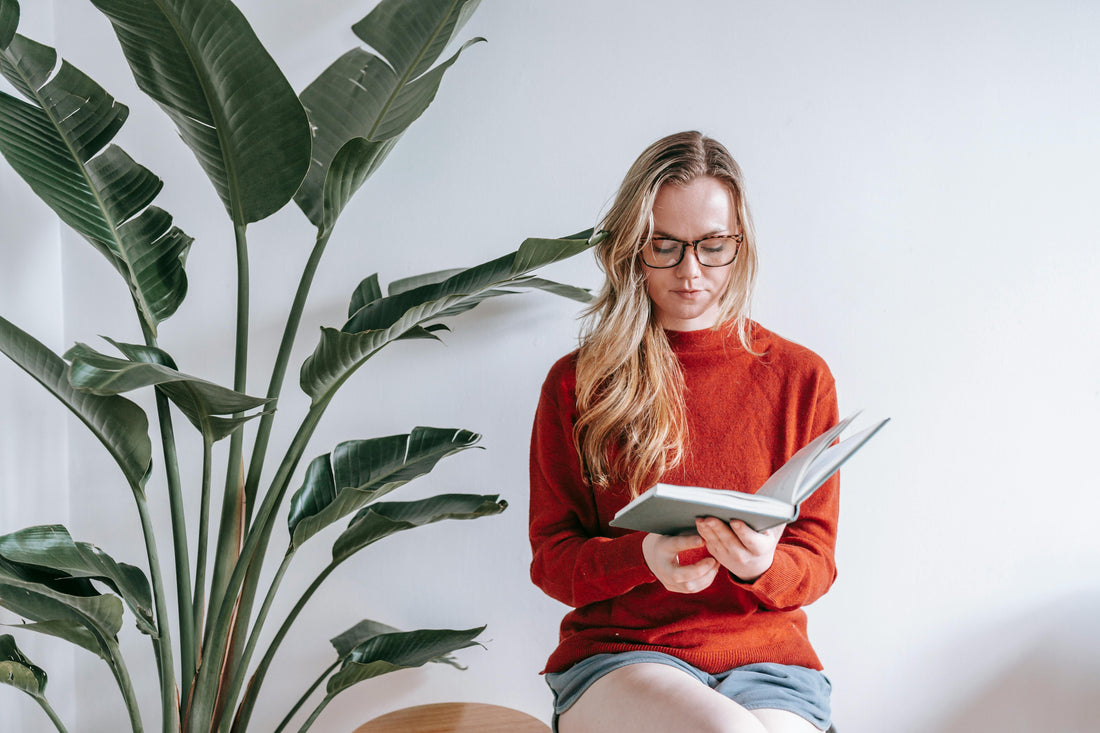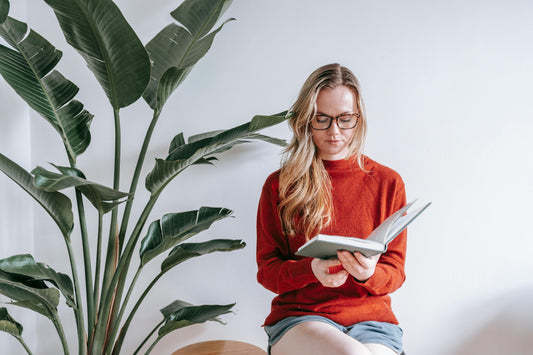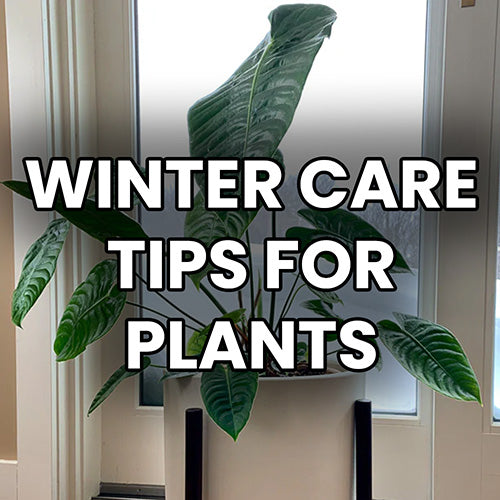
How to Care for Your Bird of Paradise (Strelitzia)
Share this with friends
Welcome to Tropical Vibes—Right in Your Living Room
Few plants deliver the drama quite like the Bird of Paradise. With its bold, banana-like leaves and stunning flowers that mimic a tropical bird in flight, the Strelitzia is a statement plant that transforms any space. But can this sun-loving stunner really thrive indoors in Southern Ontario?

Absolutely—with a few Canadian care tweaks. Let’s get into how to keep your Bird of Paradise not just alive, but thriving, even through the darkest winters and driest homes.
🌞 Understanding the Bird of Paradise
Before diving into care, it helps to know what you're working with.
- Botanical Name: Strelitzia reginae (orange flowers) or Strelitzia nicolai (larger, white-flowering and more tree-like).
- Origin: Native to South Africa.
- Mature Size: 3–6 feet indoors, depending on species and container size.
- Blooming Indoors? Rare in Canada, but not impossible with the right conditions!
This plant isn’t fragile—it just likes consistency and a bit of attention, especially during the darker Canadian months.
💡 Light: It Wants All the Sunshine You Can Give
Bird of Paradise loves bright, sometimes direct or very bright indirect light.
Best Light Practices for Ontario Homes:
- Spring to Fall: Place near south or west-facing windows.
- Winter: Light drops significantly in Ontario from November to March. Consider moving it closer to a window or supplementing with a grow light.
- If you notice slow growth or smaller leaves in winter, that’s totally normal—it's just waiting for spring sunshine.
⚠️ Avoid: North-facing windows or low-light corners. It won’t thrive there.
💧 Watering: Avoid Both Thirst and Drowning
Bird of Paradise likes consistency. In Canadian homes where heating dries the air in winter, you’ll need to watch for moisture loss—but it’s still easy to overwater.

Here’s how to nail it:
Let the top 2–3 inches of soil dry out completely before watering again. One of the best signs? Pick up the pot. If it feels noticeably lighter than usual, it’s probably time.
Still unsure? Watch the plant’s body language. When the leaves start to look a little wilted or your plant seems “sad” and less perky—that’s your cue. Even letting it sit like that for a day is totally okay. These are hardy plants, not drama queens.
Deep Soaking Method:
Most plants are in nursery pots that sit inside decorative ones. To water thoroughly:
- Place the nursery pot into a tub, large bowl, or even your kitchen sink.
- Soak it for 6 to 12 hours so the roots and soil can absorb moisture from the bottom up.
- Once it’s fully hydrated, let it drain for 5 to 10 minutes, or until no more water drips out.
- Then return it to its decorative pot.
💡 Everyone has a different setup—some use buckets, others prefer the bathtub. Whatever works for your space!
Now… wait until your plant looks a little sad again, and repeat. That’s the whole system.
Important:
While it loves deep drinks, it hates sitting in water for days. If your Bird of Paradise could talk, it’d probably say, “I’d rather be a little thirsty than constantly soggy.”
Winter Watering in Ontario
During Canadian winters, your plant gets less sunlight—so its growth naturally slows down, and so does its thirst.

- You might only water it every 10–14 days in the colder months.
- Keep using the "sad plant" method—don’t go by the calendar, go by how it looks and feels.
- Be especially cautious of cold, soggy soil near drafty windows or doors.
🪴 Tip: Always check the soil with your finger or by picking up the plant before watering. If it still feels damp or has "weight" in it, hold off.
🌿 Soil & Fertilizer: The Right Mix for Healthy Roots
Soil Requirements:
- Use a well-draining tropical mix—think peat moss, perlite, and bark. We also sell our highest-quality soil blend, made here in-house!
- You can also mix a basic your own: 1 part potting soil, 1 part perlite, 1 part orchid bark.
Feeding Your Plant:
- Fertilize monthly from March to September using a balanced 10-10-10 liquid fertilizer.
- Skip feeding in winter—let it rest as it's growth will naturally be slow.
🌡️ Humidity & Temperature: Keep It Cozy
Canadian homes often have low indoor humidity—especially in winter.
Ideal Conditions:
- Humidity: 40–60%
- Temperature: 18–29°C (65–85°F)
Boosting Humidity Indoors:
- Group plants together or use a humidifier.
- Place a pebble tray with water under the pot.
- Avoid: Cold drafts, air vents, and dramatic temperature swings.
🧊 Winter Warning: Keep it away from doors and windows where cold air can sneak in.
🐛 Common Issues & How to Fix Them
1. Yellowing Leaves
Usually overwatering or poor drainage. Ensure your pot has drainage holes and you're not watering too often.
2. Curling or Browning Edges
Typically a sign of low humidity or underwatering. Mist occasionally or boost humidity.
3. Pests
Watch for spider mites, scale, or mealybugs, especially in winter. Treat with insecticidal soap or neem oil as needed.
✂️ Pruning, Cleaning & Repotting
Pruning
- Trim off any yellow or damaged leaves at the base.
- Clean dust off leaves with a damp cloth—helps them photosynthesize better.
Repotting
- Every 2–3 years, or when roots begin to push out of the pot.
- Spring is the best time to repot.
🌱 Propagation (If You're Feeling Adventurous)
Bird of Paradise is typically propagated by division, not cuttings.
- Best done during repotting.
- Separate root clumps with at least one leaf per section.
- Replant and care as usual!
🎯 Seasonal Considerations for Ontario
- Spring: Start fertilizing again. Check roots to see if it’s time to repot.
- Summer: Move outdoors to a sheltered patio for more light (avoid harsh midday sun).
- Fall: Bring indoors before temperatures drop below 10°C.
- Winter: Expect slowed growth, less watering, and extra light/humidity needs.
🌿 Final Thoughts from Gold Leaf Botanicals
Bird of Paradise may be tropical at heart, but it can be perfectly happy in your Southern Ontario home with just a little TLC. From long winters to low humidity, we’ve got tips (and tools!) to help your Strelitzia stand tall year-round.
Need help choosing the right pot, fertilizer, or grow light? Come visit us in-store—we’re always happy to help your plants thrive.
🌸 Frequently Asked Questions
Q: Can I grow Bird of Paradise indoors in Canada?
Yes! With bright light, good humidity, and proper care, it can thrive year-round.
Q: Will it flower indoors?
It’s possible, especially with older plants and high light levels, but not guaranteed.
Q: Should I mist my Bird of Paradise?
Occasional misting helps in winter, but aim for boosting overall humidity instead.





